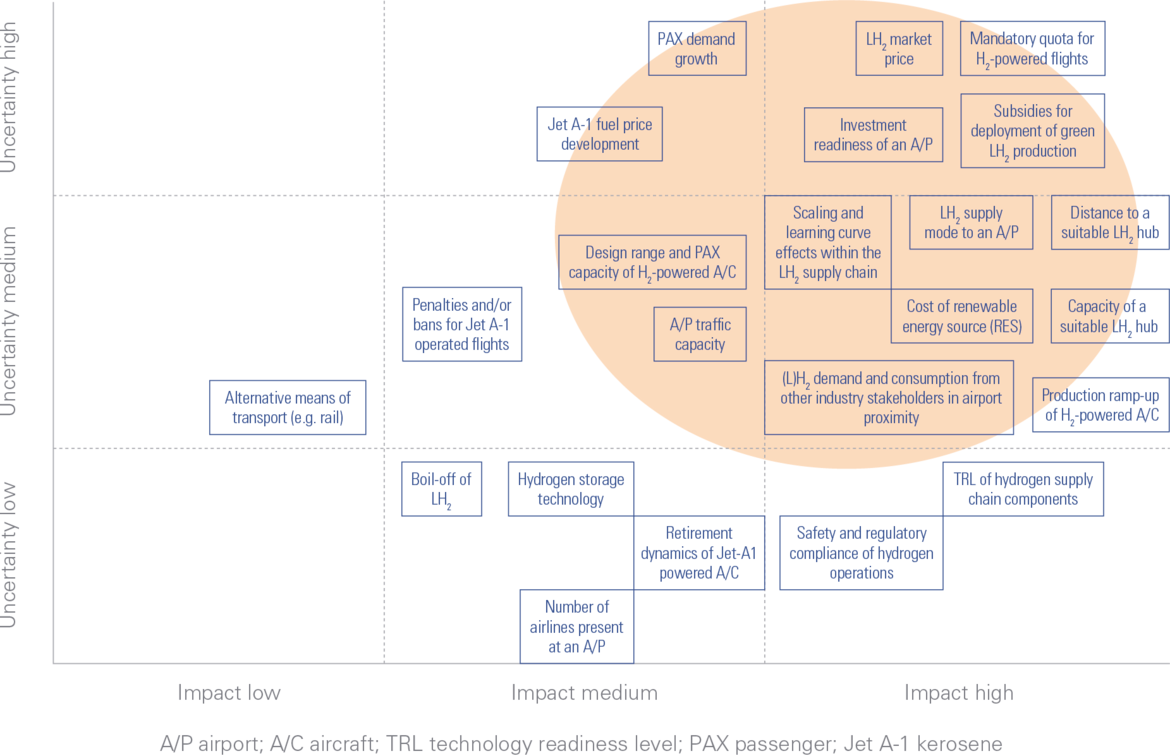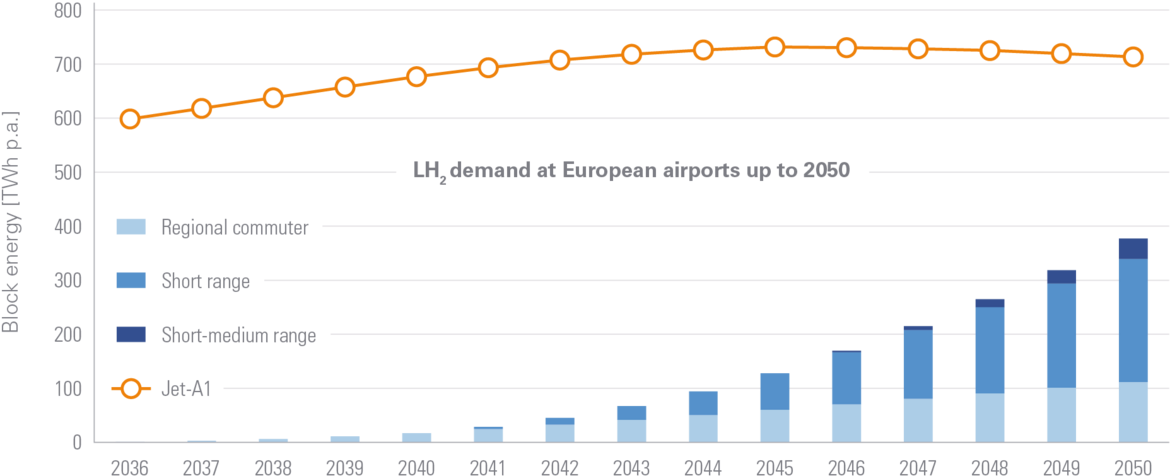The interdependence between liquid hydrogen (LH2) supply and demand in aviation represents a major challenge. Without sufficient LH2 demand from hydrogen-powered aircraft, investments in the infrastructure necessary to supply hydrogen to airports may seem economically unviable. Conversely, delays in developing the LH2 supply chain could discourage airlines from adopting hydrogen-powered aircraft.

To address this issue, Bauhaus Luftfahrt explores how hydrogen infrastructure deployment at airports influences the evolution of future fleets and networks. Therefore, a scenario-based approach is applied within the in-house Air Transport System (ATS) modeling framework. Each scenario is defined by a set of key impact parameters, which are incorporated into the modeling framework through additional modules.
Additionally, airports are clustered based on variations in flight volume, LH2 demand growth, infrastructure availability, cost reduction potential (driven by economies of scale), fleet transition capacity, and policy incentives. In this way, dependencies between fleet decisions, hydrogen supply and demand, and infrastructure readiness can be captured, while potential transition scenarios are evaluated.
Airlines depend on reliable LH2 infrastructure to integrate hydrogen-powered aircraft into their operations. The availability and scalability of refueling facilities at key airports will influence fleet deployment and route planning. Coordinated investment in airport infrastructure, aligned with airline fleet strategies, is essential to enable a stable transition.


